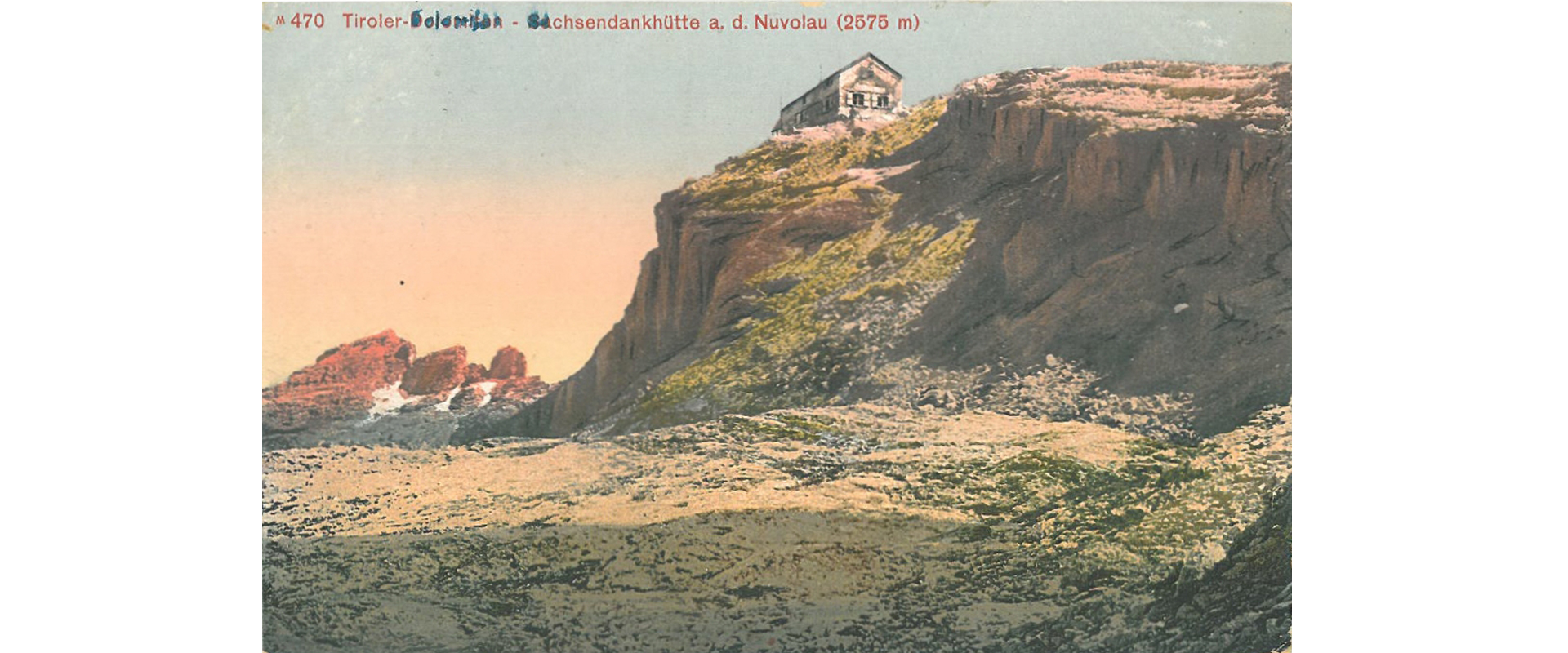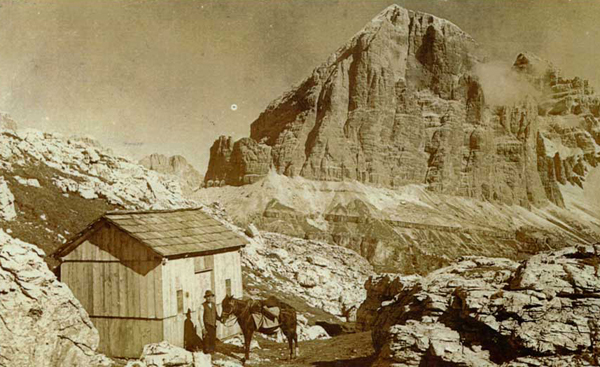- TIPS
- SUMMER
- WINTER
- HOSPITALITY
- HISTORY AND MUSEUMS
- INFO
- VIDEO
- DELICIOUS APP

© archivio Cortina Delicious
- TIPS
- SUMMER
- WINTER
- HOSPITALITY
- HISTORY AND MUSEUMS
- INFO
- VIDEO
- DELICIOUS APP

© archivio Cortina Delicious
Rifugio Cinque Torri, Nuvolaupaßhütte, Ricovero Tarditi, Barbaria-Hütte / Reichenberger Hütte, Sachsendankhütte, Wolf-Glanvell-Hütte
In the Cortina Delicious area, there are refuges where you can still breathe the atmosphere of the dawn of mountaineering, mountain huts that hosted daring pioneers who climbed the Dolomites at the end of the 1800s.
Refuges amid the most authentic mountain landscape which, due to their location, were also witnesses or victims of the mountain theatre in the First World War.
The very first refuge in Cortina d'Ampezzo and in the entire Dolomite region was built in 1883 on the summit of Mt. Nuvolau.
The history of this mountain hut begins in 1881, when the retired royal Saxon colonel Count Friedrich von Meerheimb, who recovered from a serious illness in Cortina, wanted to testify his gratitude for this to the Ampezzo Valley.

On the southern shore of Lake Federa, in front of the majestic east face of the Croda da Lago massif and at the foot of Mt. Becco di Mezzodì, at an altitude of 2046 metres, in 1901, the mountain guide Giovanni Barbaria from Cortina d’Ampezzo decided to build a refuge.
On September 2, 1901, the "Barbaria Refuge" was officially inaugurated and opened.

At 2137 metres above sea level, south-east of the base of the Torre Grande d'Averau, the most massive of the 5 towers, the Cinque Torri Hotel was inaugurated on 4th October 1904. Built by three private persons of Cortina, the brothers Giuseppe and Mansueto Manaigo da Lago and Agostino Colli, later it was renamed Rifugio Cinque Torri.

Forcella Nuvolau is located between the Falzarego pass to the north-west and the Giau pass to the south-east, in an area characterized by bold rock formations.
The first building of this area was constructed here, just a few meters below the gap which separates Mt. Averau from Mt. Nuvolau, at an altitude of 2,413 metres above sea level, towards the end of the 19th century: a one-room wooden house without foundations.

The Angelo Dibona refuge (2083 metres above sea level) is located at the foot of the wide south ridge of the Tofana, on a large terracing below the scree, where once there was the Tarditi Refuge, one of the buildings constructed during the First World War as outposts of the glen Vallone Tofana and starting point for the assaults against the Forcella Fontananegra gap.

A mountain hut which no longer exists but undoubtedly deserves a mention - and the via ferrata Scala del Minighèl.
In the years 1906-07, Luigi Gillarduzzi Minighèl (1856-1932) built a refuge in Val Travenanzes, a valley between the Fanes group in the west and the Tofana in the east, at an altitude of 2,080 metres on behalf of the Dresden Section of the ÖTK.
The Austrian Tourist Club, ÖTK, founded the first magazine devoted to mountain tourism in 1869 and built a total of 49 refuges.
